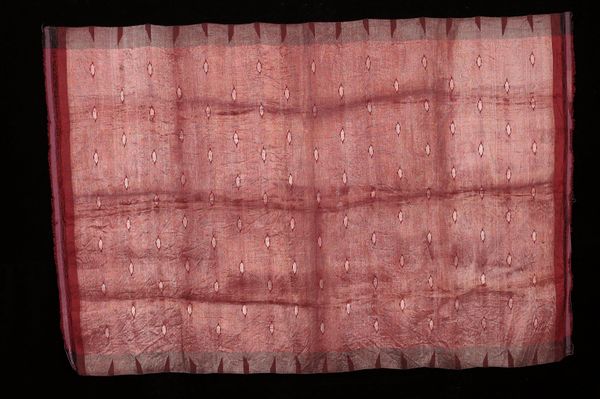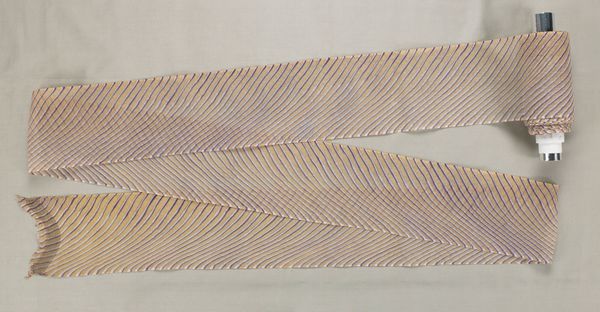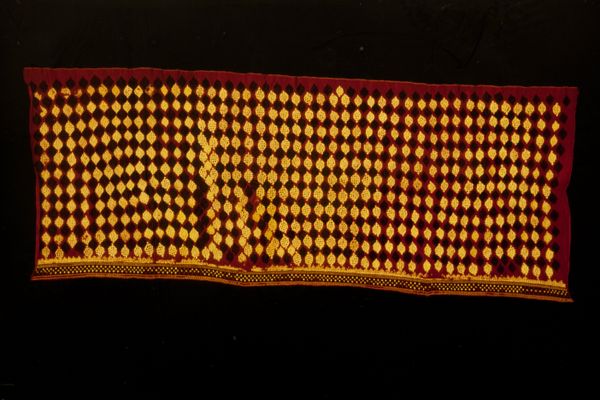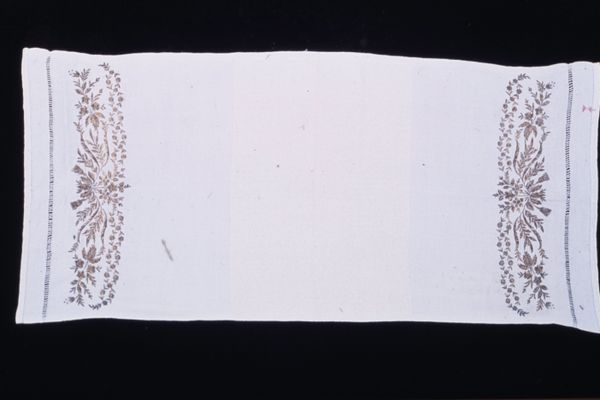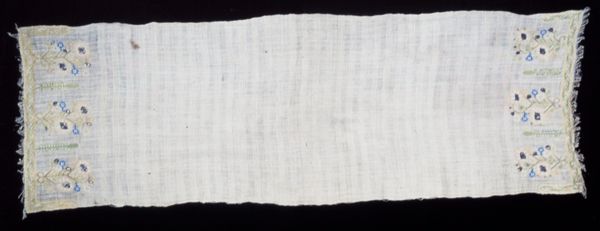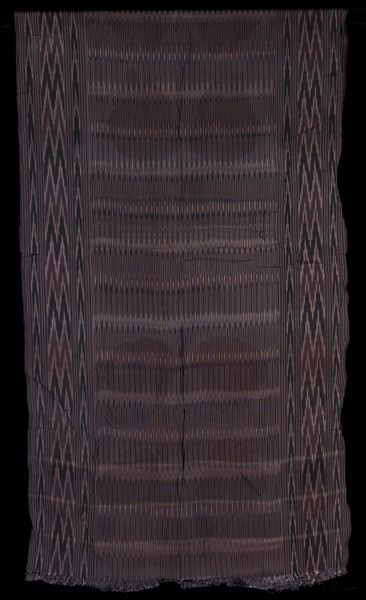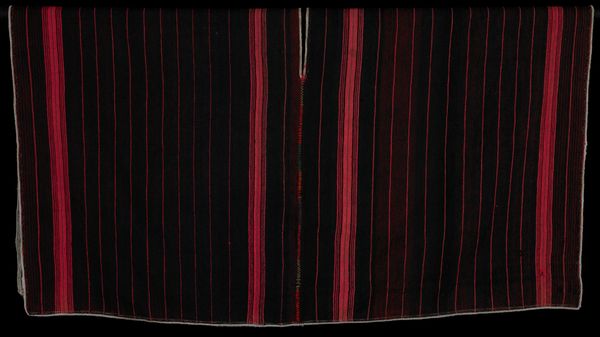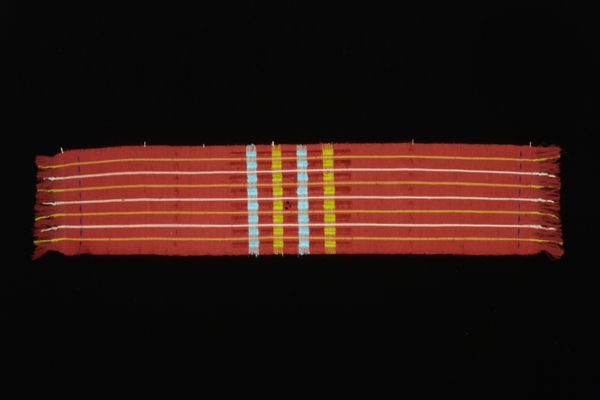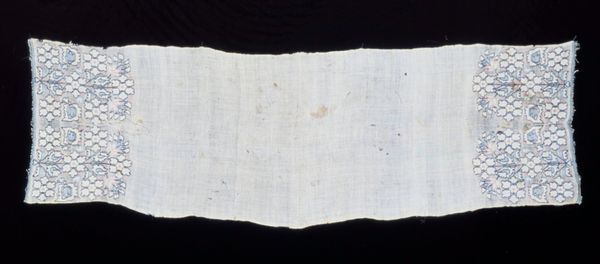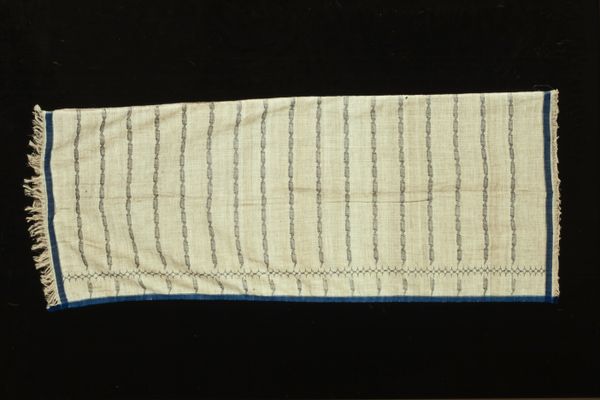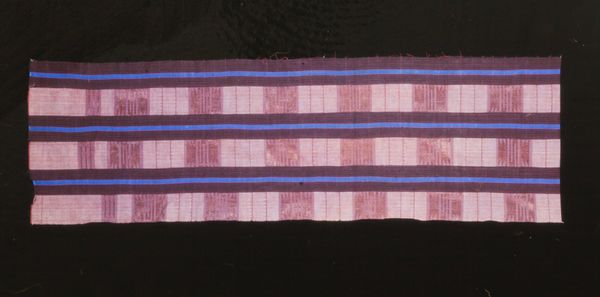
textile, photography
#
textile
#
photography
#
geometric
#
modernism
Dimensions: 6 1/4 x 30 x 18 in. (15.88 x 76.2 x 45.72 cm)
Copyright: Public Domain
Curator: Well, isn’t that a surprise. Visually, they look like they’re almost floating there in the dark! Editor: We’re looking at what is simply titled, *Man's Pants*, dating back to around the 1920s, and housed here at the Minneapolis Institute of Art. Although anonymous, it prompts an immediate curiosity about how the seemingly ordinary could challenge the established artistic conventions during that time. Curator: You’re right, their very mundaneness is striking! At first glance, these pants seem rather commonplace. They’re simple striped cotton, quite faded, really. Yet, there’s a curious formality in the presentation, as if we're examining something quite precious. It seems very calculated that it’s positioned like this— Editor: It makes one wonder about the intention behind preserving, documenting, and displaying a mundane object like a pair of pants. Who wore them? What was their story? In terms of artistic context, this could align with the Dadaist movement. Rejecting the norms, valuing everyday objects to challenge our conventional expectations... How was clothing portrayed or used as symbols in art at this period? Curator: That's a great question! We see the adoption of materials and techniques typically associated with crafts elevated to a fine art. By photographing and presenting an ordinary garment with geometric accuracy, they invite us to reconsider what constitutes "art" and who gets to decide its worth. Who determined what was valued in an object then versus how those notions may have shifted since? I suspect a lot of artistic intent went into even the display here; it forces a sense of respect on what could easily be tossed aside. Editor: Absolutely. In placing value on these pants, do we also reconsider social hierarchies, ideas about utility and labor? And considering the social and economic climate of the 1920s, what might these pants represent about the everyday lives of working men at the time? Curator: Perhaps it served to memorialize anonymous craftsmanship. We tend to forget, don’t we, that everyday objects once held a very significant, possibly deeply personal, connection for someone somewhere. That’s something that always haunts me. Editor: Right. This reminds me of art's power to elevate and commemorate the commonplace, turning something utterly ordinary into a source of profound reflection. Curator: Precisely, they remind us of how objects can, when presented in the right way, whisper volumes.
Comments
No comments
Be the first to comment and join the conversation on the ultimate creative platform.

